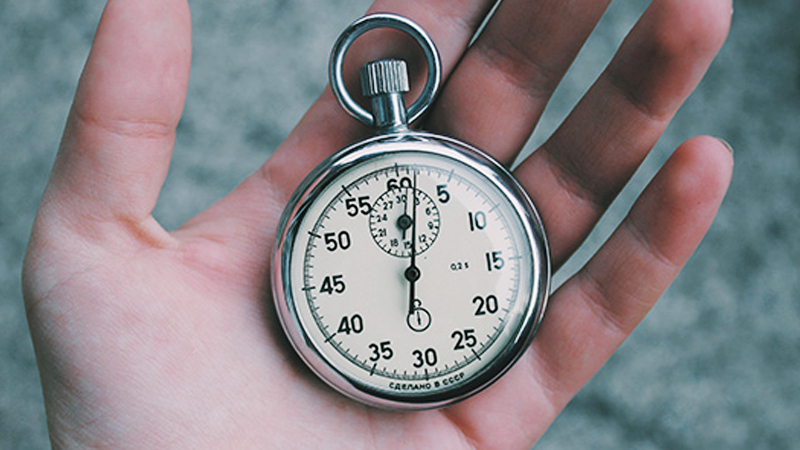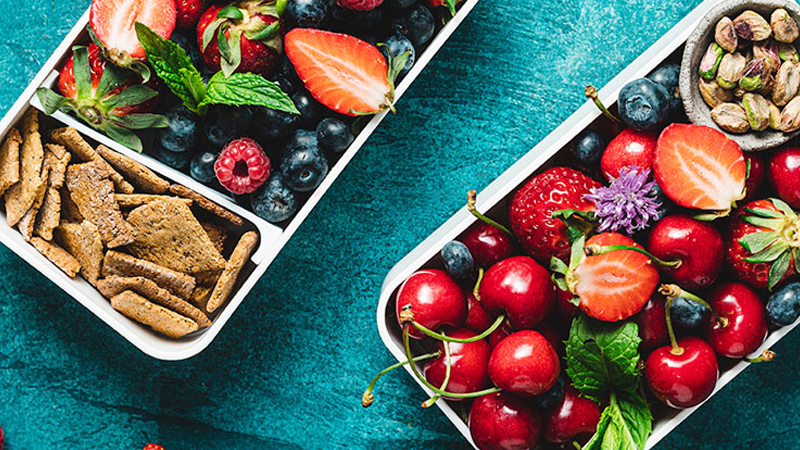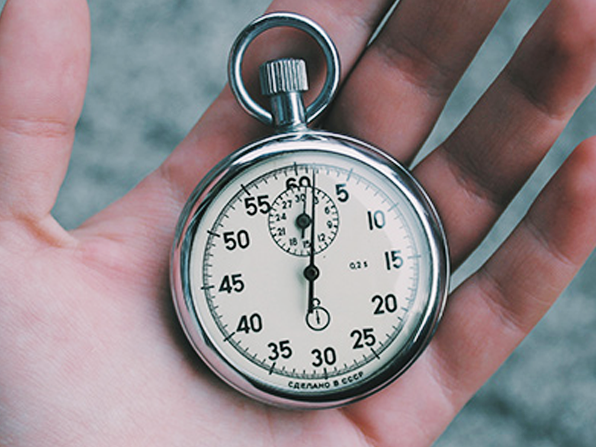
Assuming you’ve got the basics down – fewer calories and more physical activity – you’re probably looking for additional ways to speed up weight loss.
While many of my clients are just starting their weight loss journey, plenty of my gym regulars and online followers have already shed their first 10-15 pounds.
Their most common question is “What else can I do?”
My name is Shai Walker. I'm an experienced personal trainer and online coach, and I won't waste your time with general tips or unhealthy ways to lose weight.
I'll share five effective strategies. These aren't magic bullets on their own, but will help you lose weight quickly without risking your health.
That being said, let's get straight to the point.
Align Your Eating Habits with Circadian Rhythms
I've trained many folks who were doing “everything right” but still struggled to achieve the desired healthy weight. One factor many overlook is when they eat, not just what they eat.
Our bodies follow natural circadian rhythms that affect metabolism, hormones, and how we process calories. Research suggests that eating in sync with these rhythms can significantly impact weight loss efforts. I've seen this work firsthand with clients who were stuck on a plateau.
The concept is straightforward: your body processes food differently throughout the day.
In the morning and early afternoon, insulin sensitivity is higher, meaning your body handles carbohydrates more efficiently. As evening approaches, this sensitivity decreases, and those same calories might be more likely to be stored as body fat.
Here's how I recommend implementing this approach:
1. Concentrate most of your daily calories earlier in the day. Try a substantial breakfast with healthy fats and protein, a moderate lunch with complex carbs, and a lighter dinner focused on vegetables and lean protein.
2. Consider a feeding window of 8-10 hours. This modified intermittent fasting approach has shown promising results in clinical nutrition studies. For example, eating between 9 am and 7 pm, then giving your digestive system a break overnight.
3. Don't eat heavy meals within 3 hours of bedtime. When one of my clients stopped his late-night snacking habit, he broke through a three-month weight loss plateau without changing anything else in his routine.
Aligning your eating habits with your body's natural rhythm doesn't mean eating fewer calories, but timing them better. Many processed foods are consumed late at night, so this approach automatically reduces those empty calories.
Your body needs enough calories to function properly, so I don't suggest skipping meals. The idea is to be smarter when planning your meals. Do that, and you may as well stop counting calories.
Include Polyphenol-Rich Foods in Your Diet
Polyphenols are naturally occurring compounds found in many plants that have antioxidant properties. Beyond their general health benefits, studies have proven that polyphenol-rich foods are also effective for weight management in various ways.
That's the reason extracts from green tea (catechins), garcinia cambogia, and juniper berry, to name a few, are some of the key ingredients in effective fat burners.

Here are some polyphenol powerhouses that you can easily include in your diet:
Blueberries and strawberries are packed with anthocyanins that reduce fat storage. Adding a cup to your morning oatmeal or post-workout smoothie is an easy upgrade.
Extra virgin olive oil contains oleocanthal, which supports metabolic health. I drizzle it on salads or use it for low-heat cooking instead of processed oils.
Herbs like turmeric contain curcumin, which helps reduce inflammation associated with obesity. Black pepper enhances its absorption, so I'd recommend combining them.
And if you love chocolate as much as I do, don't be shy…treat yourself with dark chocolate a few times a week. It will not only enhance your mood but also reduce hunger and improve insulin sensitivity.
Change Your Workout Routine Every Month
Been doing the same workout for months?
If so, I bet you’ve hit the point where results have stalled.
Many confuse this with the so-called Exercise Paradox, but they're wrong.
Our bodies are incredibly adaptable. Repeating the same exercise routine naturally leads to becoming more efficient at performing it and burning fewer calories.
One of the most common reasons for weight loss plateaus.
Now, I'm not saying you should randomly jump between workout classes. The solution is programmed variation, and I recommend completely changing your workout routine every month.
Here's how I structure this for my clients:
Month 1: Focus on higher rep (12-15) full-body resistance training with moderate weights, training 3-4 days weekly with minimal rest between exercises.
Month 2: Switch to lower rep (6-8) heavier weight training with longer rest periods, focusing on specific muscle groups each day.
Month 3: Incorporate metabolic conditioning with circuit training, combining strength moves with short cardio bursts.
As you noticed, cardio isn't the main focus. Like I discussed in my article 5 Facts for Losing Weight You Must Know to Succeed, strength training is more effective.
This approach prevents muscle adaptation and continuously challenges different energy systems. Your body must rebuild and recalibrate with each new stimulus, which requires more calories and prevents the decline in metabolism.
I've tracked body composition changes in clients using this method versus others who maintained the same routine for two months or more. Those who varied their workouts consistently lost more body fat and retained more muscle mass.
The psychological benefits are equally important. Exercise variety keeps you motivated, prevents boredom, and increases adherence. You're more likely to push harder in workouts that feel fresh and interesting, burning more calories without even realizing it.
Incorporate Daily Non-Exercise Activity
As a trainer, I notice a common pattern among folks who struggle to achieve results despite consistent gym attendance. They crush their 60-minute workouts, then remain relatively inactive for the other 23 hours of the day.
This overlooks one of the most powerful ways to accelerate weight loss: Non-Exercise Activity Thermogenesis (NEAT).

NEAT encompasses all physical activity that isn't formal exercise. I'm talking about walking, fidgeting, cooking, cleaning, yard work, even standing instead of sitting. The latter is particularly effective for people trying to lose weight with a desk job.
These movements seem insignificant individually, but collectively, they can burn hundreds of extra calories daily. And you know what's the best part?
Your body doesn't trigger the same compensatory hunger response that often follows intense workouts. This makes it easier to maintain a calorie deficit without feeling hungry.
NEAT also helps preserve muscle during weight loss. By moving more throughout the day, you're giving your muscles consistent low-level activation signals. That helps to maintain mass while losing fat.
Finding the energy for both structured workouts and increased daily activity can be challenging, especially when cutting calories. Many people I train have had this problem.
What I recommend to all of them, and I personally use, is SKALD.
Unlike harsh stimulants that leave you crashing, this all-natural supplement provides sustained energy throughout the day, among many other benefits for healthy weight loss.
Enhance Weight Loss Efforts with Cold Exposure
I know it may sound like torture, but cold exposure is another way to speed up weight loss. It leverages your body's natural response to cold to increase calorie burn and alter fat cell behavior.
When exposed to cold, your body activates brown adipose tissue (BAT) to generate heat. Unlike white fat, which stores energy, brown fat burns calories to produce warmth. This process, known as thermogenesis, increases your metabolic rate.
I've been doing it for years due to its multiple health benefits. Here are three ways you can implement it.
Cold showers provide the most accessible starting point. Begin with your normal shower, then finish with 30-60 seconds of cold water. I suggest starting with lukewarm and gradually decreasing the temperature over several weeks.
When you're ready to level up, try ice baths. While used mainly by athletes for better recovery in the past, ice baths became trendy in recent years due to their other wellness benefits. I started with 2-3 minutes in water around 50-60°F and gradually built tolerance.
Winter outdoor activities are also great. Even a brisk 30-minute walk in cold weather activates BAT, and snow shoveling burns more calories than many gym exercises. I encourage clients to slightly underdress (while keeping extremities protected) to maximize the metabolic response.
Of course, those with certain health conditions should consult their healthcare professional before trying cold exposure. For most people, though, this practice offers a simple, cost-free way to potentially accelerate weight loss while gaining numerous other health benefits.



